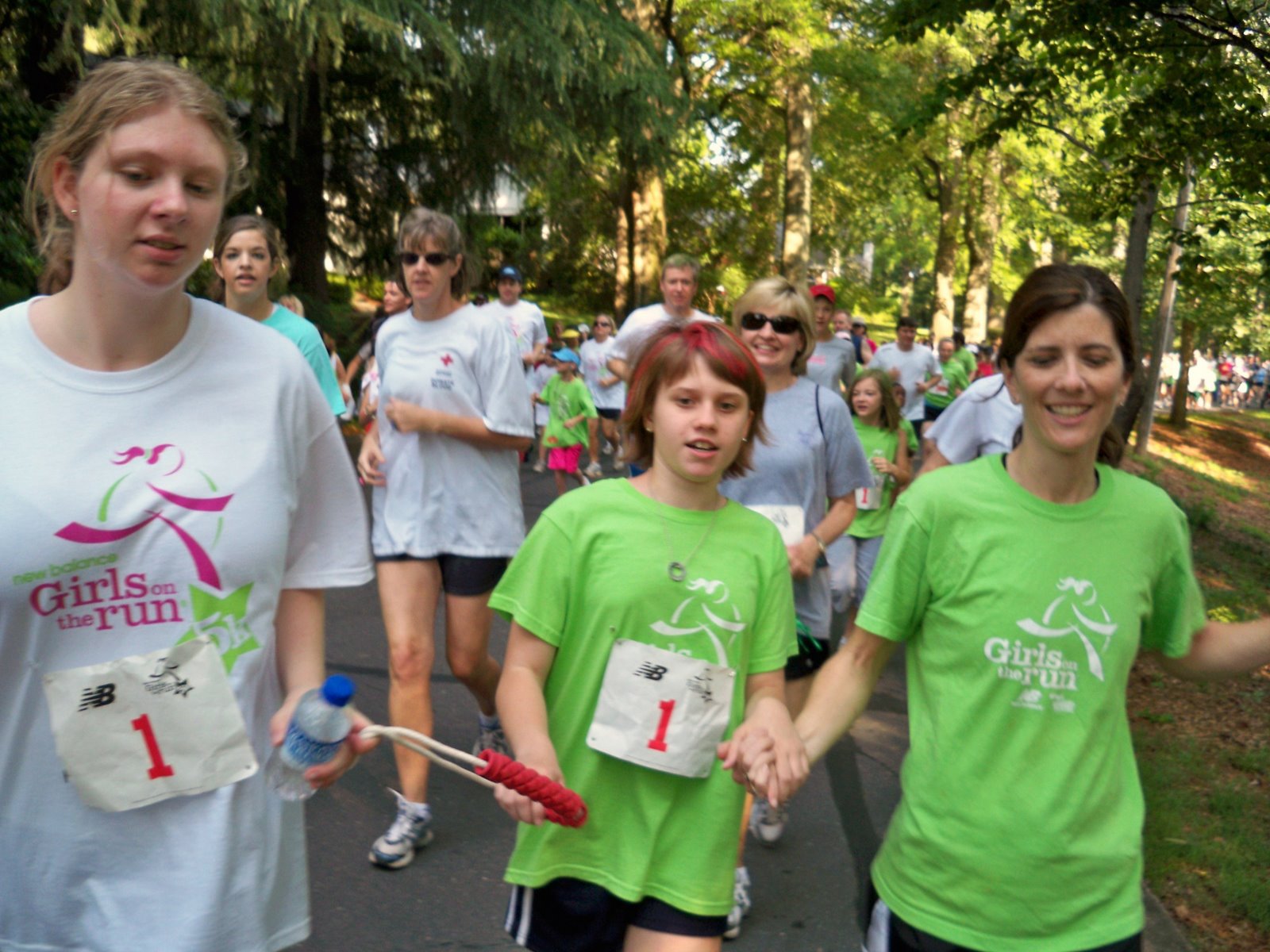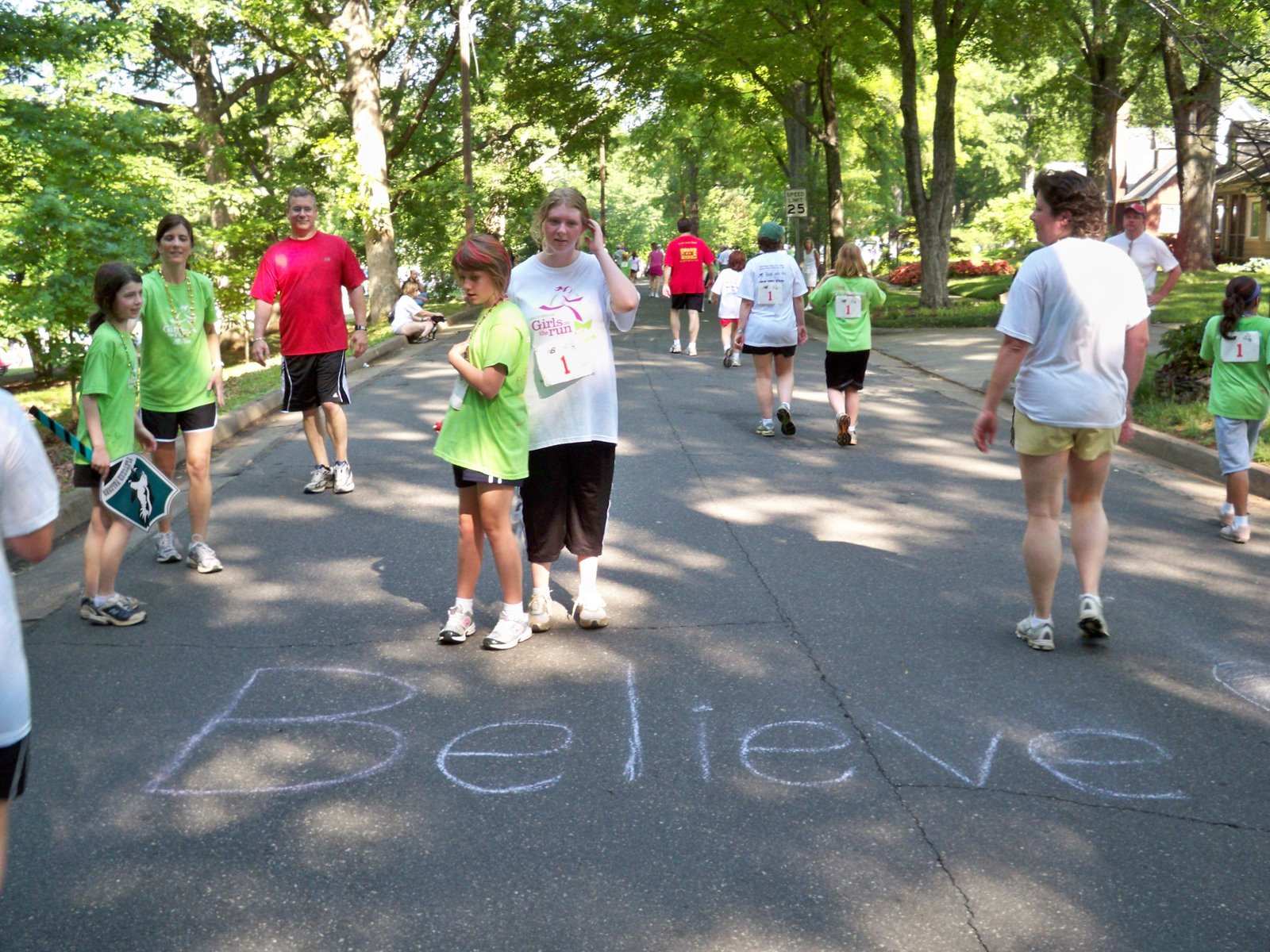Mom is in Hamburg, Germany to represent Taylor’s Tale at the 12th International Congress on Neuronal Ceroid Lipofuscinoses (NCL). Each day through June 6, check out my blog for updates from this gathering of the world’s top Batten disease experts – those who represent our greatest hope for preserving the dreams of children like Taylor.
Notes from Germany
Woo Hoo!
Taylor and Mom just returned from Duke Hospital in Durham, where T underwent various tests for her new neurologist (including her third MRI since January and more neuropsychiatric testing). After two long days during which a chatty T’s only complaint stemmed from the “gook” they put in her hair for the EEG, she exited the front of the hospital and let out a big “Woo hoo!” ‘She was finished, tired, but still smiling…my role model,’ Mom wrote in her CaringBridge journal.
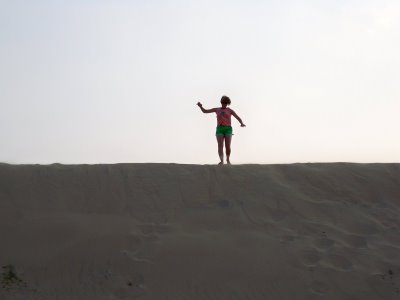
We Need Your Words
Taylor’s Tale has a brand new website! Check it out here.
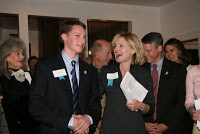
Chalk Letters
“Oh, my friend, it’s not what they take away from you that counts. It’s what you do with what you have left.” –-Hubert Humphrey
The T Zone
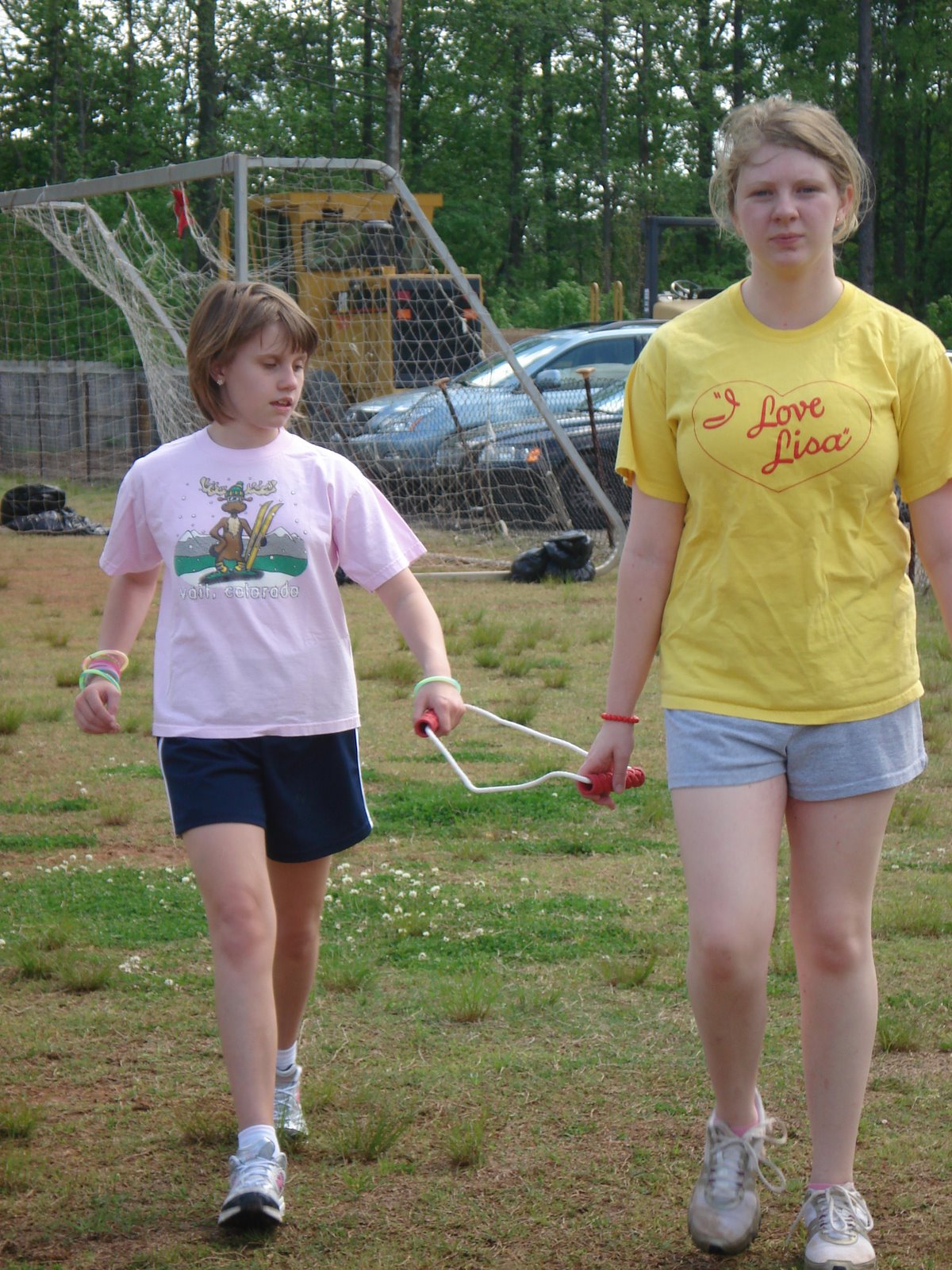 This Saturday, Taylor will run in her second 5K when she joins her Girls on the Run teammates at Charlotte’s Latta Park for the culmination of their spring program.
This Saturday, Taylor will run in her second 5K when she joins her Girls on the Run teammates at Charlotte’s Latta Park for the culmination of their spring program.
The In Crowd
W e spent an awesome couple of days this past weekend at the new Great Wolf Lodge in Concord, just north of Charlotte. Thank you to the angels who made it possible for Taylor to make happy memories with her family at the resort.
e spent an awesome couple of days this past weekend at the new Great Wolf Lodge in Concord, just north of Charlotte. Thank you to the angels who made it possible for Taylor to make happy memories with her family at the resort.
The weekend marked the Great Wolf Lodge’s official grand opening celebration, complete with a Radio Disney banquet and intimate concert with Disney star Mitchel Musso of Hannah Montana fame in the lobby on Friday night. When the music started, most everyone else got up on their feet, but T remained seated on the floor. Every time I squatted down to talk to her during the show, she was lost – no – found – in her own private, happy little world of music. She chanted when the crowd chanted and clapped when they clapped and cheered when they cheered, but she experienced that hour in her own special way.
One of the songs Musso and his band performed was called “The In Crowd.” As the lyrics blared from the speakers stacked not more than two feet from where we stood and I took in the gobs of preteens and tweens and teens oogling the band members, I thought about how hard it must be for a girl T’s age to endure everything she has endured, from getting a rotten diagnosis to taking yucky meds to struggling with some subjects in school to going blind to traveling thousands of miles to have major (and experimental) brain surgery, losing her beautiful head of long blonde hair in the process. I think back to when I was in the fifth grade, like T, and remember how it was the year when it seemed as though an invisible switch was flipped, and the girls started puberty, had their first real crushes on boys and suddenly cared deeply about not so much what clothes they wore to school, but rather what others thought of them, and how all of those physical and social and emotional changes triggered what I call the ‘mean girls’ syndrome. I think, in one single moment, how compassionate people are and how cruel they can act. And then, I remember how T has faced each day – every wound, every setback, every laugh and every moment of great hope – with more grace and courage than I could ever dream of finding within myself. We have created such a complex system for how people are judged socially, and for what? We spend so much time examining other people for their faults that we often look right past their gifts.
The song served as a stark reminder of one of the many kinds of pain T has felt in her short life, but it was also a reminder of what makes her so special. Yes, she has Batten disease – but she’s also a 10-year-old girl who makes a note of Disney movie and CD release dates and who didn’t want to wash her hand after Mitchel Musso held it when it was her turn at the autograph session. She’s a girl who wants so badly just to be normal but who also isn’t afraid to walk – or dance – to her own beat. And the moments we shared at the lodge – whether during the concert or on the slides at the indoor water park or on the mini golf course or in the arcade during our heated games of Skeeball and basketball and air hockey, were filled with her laughs and her smiles – and that, to me, is the grandest gift of all.
Light Years and Stars in the Sky
 I just came across a headline on the Web announcing that scientists have discovered a “nearly Earth-sized planet” some 20 light years away, dubbed Gliese 581 e. Though it was immediately discounted as a habitable world due to its proximity to the nearest star, Gliese 581 e gave scientists who study the universe renewed confidence in the idea that we really might not be all alone, after all.
I just came across a headline on the Web announcing that scientists have discovered a “nearly Earth-sized planet” some 20 light years away, dubbed Gliese 581 e. Though it was immediately discounted as a habitable world due to its proximity to the nearest star, Gliese 581 e gave scientists who study the universe renewed confidence in the idea that we really might not be all alone, after all.
A Jibbit Never Forgets
John and I are in the midst of a construction project at home and have spent the past couple of nights working with a movie on in the background. Last night, we watched Rain Man, the 1988 movie in which Dustin Hoffman plays a savant. Afterward, we had a lengthy discussion about autism and the mechanics of the human brain, albeit at 2 a.m. Then, strangely, when we turned on the TV to begin working again tonight, we immediately came across a show on the Science Channel titled “Brain Man” that focused on Daniel, a savant in his twenties who sees numbers as distinct figures and shapes in his mind and who, unlike Hoffman’s character in the movie, can communicate freely about his unique way of thinking and processing information. During the program, Daniel met the real Rain Man – the man who originally inspired the story.
The show closed with a rhetorical question about the true nature of intelligence – a question I’ve considered before. I continued to think about it after the broadcast had switched to a program about body clocks (that one’s still on in the background as I write this – and even as I ponder the nature of the human brain, I wonder what it is about my body clock that leads me to get into deep discussions at 2 a.m. but hit the snooze button twenty-seven times every weekday morning).
The reason it’s a rhetorical question is because there isn’t one singular, bulletproof definition of human intelligence. Academic success is probably the trait most often equated with intelligence, because it is achieved in a controlled setting and with the benefit of comparisons between students. But even “academic success” has to be qualified further. Can academic success be rigidly defined by 4.0 GPAs and high SAT scores?
Taylor learned to read when she was three. I won’t ever forget the day she read a book to me in the time that it took my dad to run into Papa John’s and pick up a pizza while we waited in the car. Her preschool teachers tried to teach T and her classmates to read by putting all of their names up on the wall. They had to try a different tactic after they realized T could read all of the names, and did – aloud. At that early age, she also excelled at recognizing figures and shapes. My first car was a Honda Accord. One day, as we drove by a Honda dealership, my toddler sister pointed out the window at the dealership sign and said, “Rar Rar’s car!”
But it wasn’t long after we discovered T’s potential that we also uncovered her struggles. Math was so frustrating for her that even my mom, who pushed me to excel beginning as early as I can remember, was at a loss. I remember the day we sat in Starbucks and tried to tackle T’s math homework. She was in the first grade, and her class was learning about money. Using the cutout shapes from her math workbook, we desperately tried to explain why two dimes and a nickel equal a quarter and five pennies equal a nickel. When we finally noticed the tears in her eyes, we stopped. To this day, my sister struggles with simple math.
While T will likely never be an engineer or an accountant, she is supremely gifted. She has learned the Braille alphabet in less time than it takes many children to learn the conventional alphabet for the sighted. She uses an advanced form of sensory perception to survive without the gift of vision in our visual world, and she retains an incredible amount of information from movies, books and conversations.
My mom recently told me a story that only illustrated what I already knew about my sister’s memory. Mom got the Easter decorations and T’s Easter basket out of the attic a few weeks ago. After the two of them decorated the Easter tree, they decided to put some fake grass around the base of the tree. Mom went to take some grass from T’s Easter basket and found a dinosaur Jibbit (shoe charm) hiding in the grass from last Easter. Mom handed the dinosaur Jibbit to T, and she felt it for a minute. Then, she said, “But Mom, where is the ladybug?” Perplexed, Mom searched through the grass and, sure enough, found the ladybug Jibbit that, like the dinosaur, had spent the past year as a stowaway in the attic.
T has a neurodegenerative disease, and since her diagnosis, I have learned far more about the human brain than I ever cared to know. If I had one wish, I would eradicate Batten disease from the face of the earth so that no child has to suffer in the ways that T has, ever again. But even as I have despaired over her fate and wrung my hands and watched painful moments such as the one T endured in that Starbucks years ago, I have been so moved by her gifts, her intelligence and, above all, her determination and her ability to adapt in the face of unspeakable adversity, that I believe now, more than ever, that the world would experience a tremendous loss if we lost T.
The Road that Leads Us There
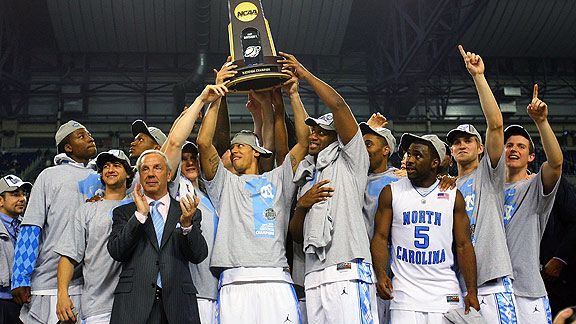 Last night, UNC won the national title with what was, for me, the sweetest victory I’ve ever experienced as a sports fan. Now, if you happen to be a Michigan State fan, or if you’re just not particularly fond of my alma mater (it’s okay), I hope you’ll continue reading. This post is not about college basketball. Not really.
Last night, UNC won the national title with what was, for me, the sweetest victory I’ve ever experienced as a sports fan. Now, if you happen to be a Michigan State fan, or if you’re just not particularly fond of my alma mater (it’s okay), I hope you’ll continue reading. This post is not about college basketball. Not really.
Sports aren’t everything – not even close. But they’re a pretty good analogy for life more often than not, and the best part is, they occur in a strangely beautiful alternate world where hard fouls hurt and losses hurt even more, but none of it really matters in the end, relatively speaking anyway. I can’t ever walk away from the painful truth that my sister has a devastating illness – one that has permeated her life and mine and those of everyone who loves her and even some who don’t know her well enough to love her but have seen the fight in her. I’m not living my life the way I once imagined because of my twists and turns in the road. And in many respects, that’s okay. How often does life turn out just the way we imagined? And do we really want it that way, even if it was possible?
- « Previous Page
- 1
- ...
- 20
- 21
- 22
- 23
- Next Page »

